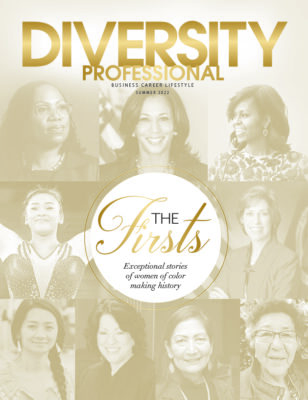BEST PRACTICES FOR A MORE INCLUSIVE APPRENTICESHIP PROGRAM
Hiring people with a disability as your apprentices is easier than you might think.
More people with disabilities are in jobs in the United States than before the pandemic, according to the Department of Labor. By the end of last year, almost four in 10 people with disabilities (37.8%) were at work. The unemployment rate for people with a disability is now 5% compared to 3.2% for people without a disability. That compares with 7.8% and 3.6%, respectively, in February 2020. What’s going on?
Research from the National Bureau of Economic Research suggests people with disabilities are “disproportionately benefiting from the rapid recovery from the initial economic contraction at the start of the pandemic.” It points to labor shortages and how the shift to hybrid and remote working has buoyed these employment numbers.
Ready, Willing, and Able to Work
I argue that many more people with disabilities are ready, willing, and able to work. Are your future employees hiding in plain sight? Businesses benefit when their workforce better reflects their communities. Research from Accenture shows companies in the top 20% for workplace disability inclusion earn 28% higher revenue and 30% more profits than their competitors.
However, problems remain. The International Disability Alliance says barriers to stopping more businesses from employing people with disabilities include:
- Poor accessibility to the workplace and work
- Inadequate provision of reasonable accommodation
- Transportation issues, and more.
Bridging these gaps not only puts people with disabilities in meaningful work but also helps retain them.
A UK neurodiversity advocate, Elisabeth Wiklander, argues that to change societal attitudes and lower barriers, we need to encourage more openness and discourse. The common stereotypes of placing people with disabilities in low-skill and low-wage roles only exacerbate stigma and prejudices. She writes: This is not just a human rights issue, but a waste of human resources. We see mind-blowing accomplishments and quality work throughout neurodivergent communities provided they’re given a chance with circumstances adapted to their calibration.”
However, even as the U.S. makes inroads into more inclusive workplaces, we’re battling pushback on diversity, equity and inclusion policies in some sectors, such as higher education.
The Chronicle of Higher Education writes that the model state legislation that’s been drafted could prevent administration and faculty members from “even advocating” for such policies and “cause institutions to violate accreditation standards.” What’s stopping your business from getting serious about inclusion? Could there be an occupation fit for apprenticeships that allows you to build your talent pipeline and upskill people with a disability to enjoy the benefits of a more inclusive workforce? Research supports that the benefits of setting up an apprenticeship program outweigh the costs. Here’s how to go about it.
Making it Happen: Apprenticeships for People with Disabilities
You won’t have to reinvent the wheel to create a more inclusive apprenticeship program, whatever your organization type or size. Use this list of best practices from across the globe to help inspire you:
■ Consider which occupations in your business would suit apprenticeship programs
■ Create an internal team comprising representatives from management, leadership, and direct service to build and implement the program
■ Identify and work with external organizations as needed. They could include high schools, nonprofit and/or disability services groups, state apprenticeship organizations, community colleges, etc.
■ Draw on the above to help identify physical and other barriers your workplace presents to people with disabilities
■ Select which of your current staff will mentor and coach recruits
■ Work out which qualifications are crucial for the apprenticeships to achieve during your program
■ Think ‘chunks’ of core competencies for how you’ll divide up the learning and tie these to on-the-job training goals and performance measures
■ Set up your training schedule and wage progression
■ Focus your marketing and recruitment
■ Ask, don’t assume, what your recruits with a disability need in the way of workplace accommodations and aim to address these promptly
■ Ensure you monitor, evaluate and seek feedback on the program from all participants
An initiative I’m involved in, the California Ready, Willing, and ABLE Project is an example of a model of “making it happen” on the front line. The California Department of Rehabilitation, IWSI America, together with a group of employers and interested stakeholders launched the project in 2022 in Orange County focusing on apprenticeships in the healthcare sector. Candidates can apply for opportunities in occupations including CNC machine operator, dental assistant, dental sterilization technician, dispensing optician, home health aide, massage therapist and medical biller and coder.









